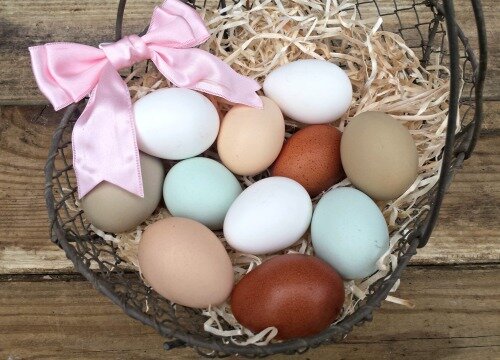Scientific Facts About Eggs

1. An egg shell is made of calcium carbonate and makes up 9-12% of an egg's total weight. It contains pores that allow oxygen in and carbon dioxide and moisture out.
2. An egg white is made mainly of a protein called albumen. It contains niacin (vitamin B3), riboflavin (vitamin B2), chlorine, magnesium, potassium, sodium and sulfur. The white contains about 57% of an egg's protein.
3. The color of an egg yolk is determined by the hen's diet. The more yellow and orange plant pigments there are in the grain fed to a hen, the more vibrant the color of the yolk will be.
4. The other colors within an egg vary with its age and other factors. Egg whites that are cloudy indicate that the egg is very fresh. Clear egg whites indicate an egg is aging; Pink or iridescent egg whites indicate spoilage and these eggs should not be consumed.
5. The blood sometimes seen in an egg comes from the rupture of small blood vessels in the yolk. It does not indicate the egg is unsafe to eat.
6. Eggs are about 105°F (41°C) when laid. As they cool, the liquid inside contracts and an air cell forms between these two layers at the large end of the egg. You can see the air cell in the flattened end of a peeled, hard-cooked egg.
7. The average hen lays 250-270 eggs a year.
8. A hen's color indicates the color of the eggs it will lay. White leghorn hens, the most common type in the United States, lay white eggs. Rhode Island Red hens lay brown eggs.
9. Eggs take about 24-26 hours to form inside a hen. A cell called an ovum develops into the yolk inside an ovary. At ovulation, the follicle ruptures and the yolk is released into a tube called the oviduct. The albumen is deposited around the yolk and then membranes form around the albumen. The shell forms in the uterus. Eggs are laid large end first and, about 30 minutes after laying, the process stars anew.
10. About 75 billion eggs are produced in the United States each year (about 10% of the world's total). China is the biggest supplier of eggs; producing about 390 billion each year (about 50% of the world's supply).
11. Turkeys also lay eggs, but you aren't likely to find them in the store. They need more nesting room, so housing them is less economical. They also have stronger mothering instincts than chickens; which makes collecting their eggs difficult.
12. Canadian researchers reported that eggs came before chickens because dinosaurs were forming bird-like nests and laying bird-like eggs long before birds (including chickens) evolved.
[Source: LiveScience]




